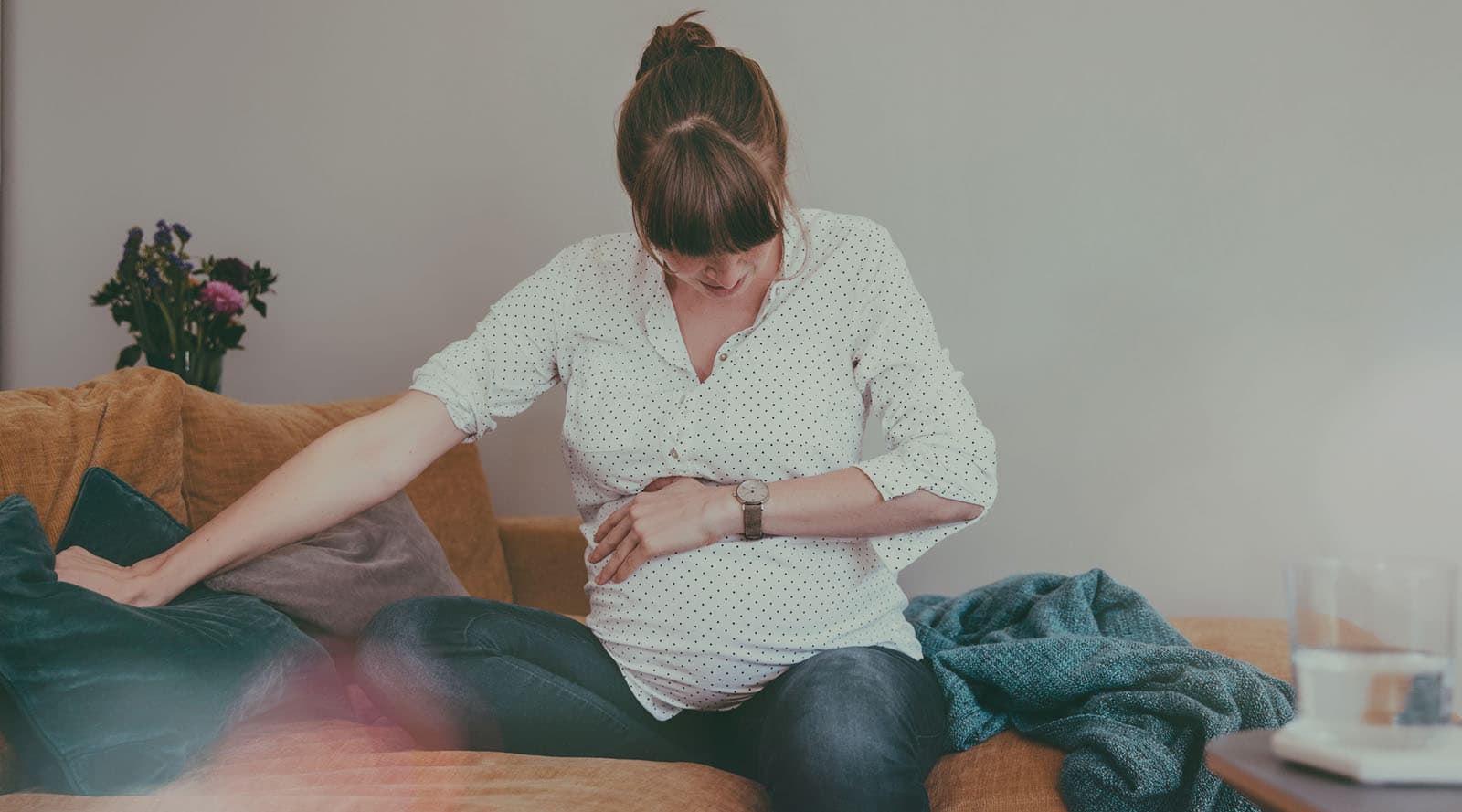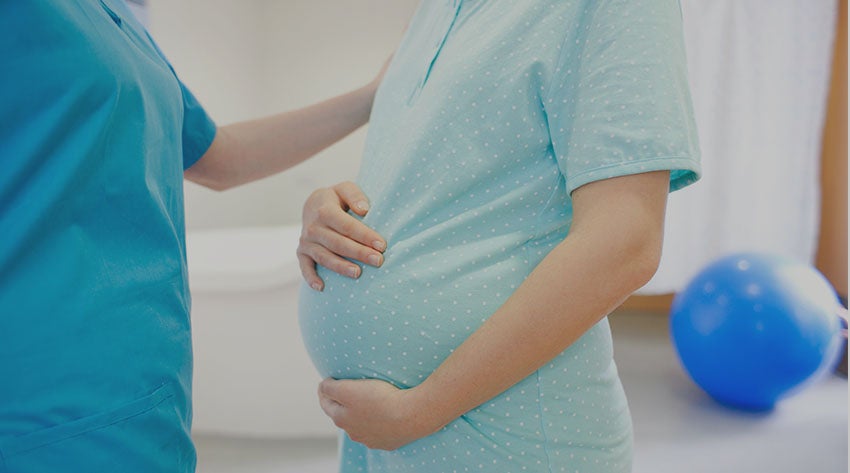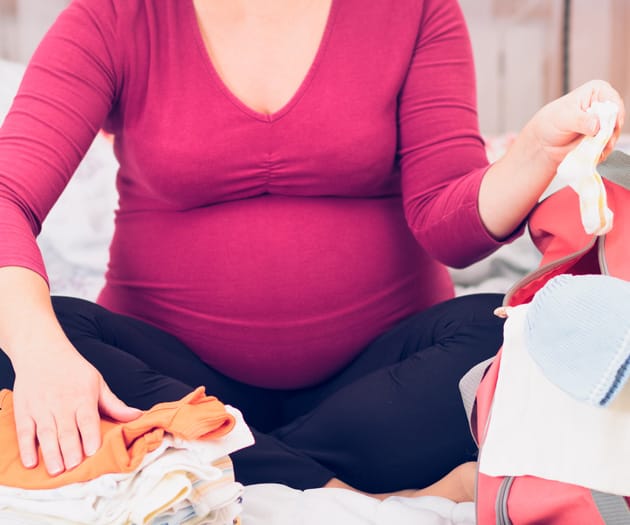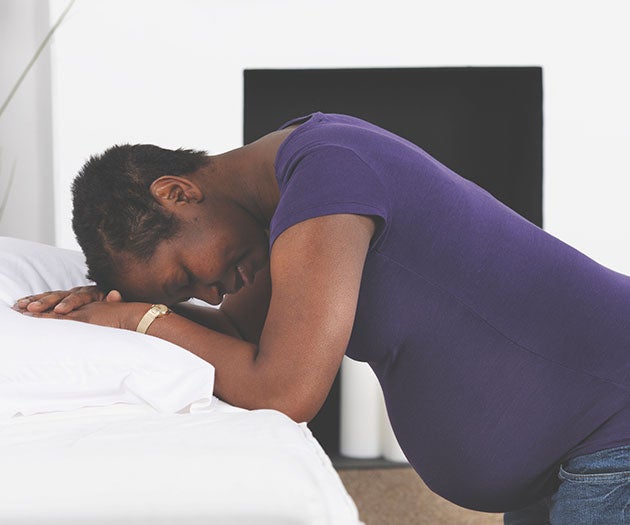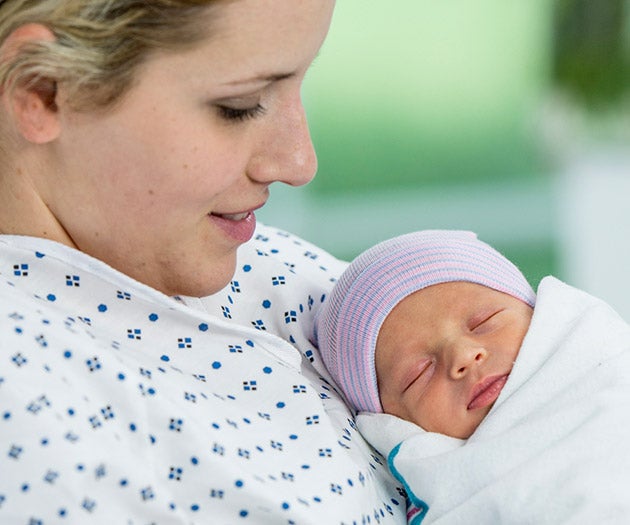Introduction
You’re nearly there. But before you meet your new arrival, it’s time for labour. Hopefully by now you’ve done all the early prep for this moment. It’s hard to feel ‘ready’ as such, but we’ve got some handy details to help you feel as ready as ever for the most special delivery of all.
What happens at the start of labour?
If it’s your first time it’s not like anything you’ve ever gone through before, so it’s hard to know when it’s really time. From about 24 weeks you may experience your tummy tightening or getting harder at some point during pregnancy without going into labour, this is Braxton Hicks. These contractions usually only go on for a minute at a time, a few times a day and shouldn’t be too uncomfortable.
If you’re not sure whether it’s Braxton Hicks or ‘the real thing’ speak to your midwife to be sure. If the Braxton Hicks contractions become more regular and painful speak to the hospital. Think of this as a good opportunity to practice breathing for the big day. You can learn the breathing techniques at antenatal classes.
Now, back to actual labour… some of the early symptoms of the start of labour (also known as the latent phase) have been compared to intense period pains. Here are some of the main symptoms of labour beginning:
-
Contractions or tightening’s – Feeling intense period-like pains regularly could mean labour is slowly approaching. Contractions will get stronger and more intense over time. If they last more than 30 seconds, labour may have started. Time to call the hospital for advice on next steps.
-
A sore back – You don't always feel contractions in your tummy area.
-
Mucus plug – This one sounds a bit weird, but a "show" in your knickers, which is basically a jelly-like mucus called a mucus plug that comes from the entrance to your cervix. This can sometimes even happen a few days before labour.
-
The urge to urinate – The sudden urge to go to the toilet, which is caused by your baby's head pressing on your bladder.
-
Your waters breaking – You may or may not experience this. But if you do and it's before you're in labour you should call the hospital right away and they'll be able to help you.
By now you should be considering your labour pain relief options if you opted to have any in your birth plan.
First stage of labour
This is when labour actually begins and you’re in what is known as ‘established labour’, this first stage of labour part is the longest and can go on for several hours, or in very rare circumstances a day or more. This is what happens:
-
Your cervix begins to thin and open up as your baby’s head makes its way down and puts pressure on it.
-
Contractions are regular, the pain is more intense, last longer, and are closer together.
-
Keeping upright and mobile will help you handle the pain of the contractions.
-
Your waters might break although lots of women go into labour without their waters breaking.
Waters breaking
Your water will most likely break during labour, but it could happen before labour starts, in which case you would need to call your midwife right away. Sometimes during labour, a midwife or doctor may offer to break your waters.
If your waters break naturally, you may feel anything from a slow trickle to a sudden burst of water (amniotic fluids). To prepare for this, you could start wearing sanitary towels in your last weeks (but not tampons) and put a protective sheet on your bed.
Your amniotic fluid should be clear and straw-coloured, if your waters break and they’re smelly or coloured or you're losing blood let your Hospital know immediately. You and your baby may need urgent attention.
Most women go into labour 24 hours after their waters break, if you haven’t you will be able to discuss your plan of care with your midwife.
Contact your midwives right away, if your baby is moving less than usual or if there’s any change in the colour or smell of any fluid coming from your vagina.
Someone should be keeping a check on your temperature every 4 hours to make sure it doesn’t go above 37.5C at any time. Speak with your midwife if you have any concerns.
Transition phase of labour
This stage is what it sounds like, the bit between the first two main stages of labour and is often characterised by a big emotional change. You might feel all kinds of feelings at this point in labour, but this phase is very short-lived (10-15 minutes). Your midwife and birth partner will encourage you and provide emotional support. This phase can be challenging but that’s because your body is doing the important work of getting ready for the pushing it needs to do next. To help you prepare for and get through labour you may want to consider hypnobirthing for coping and relaxation techniques. Some UK NHS hospitals even provide hypnobirthing classes so speak to your midwife team.
Second stage of labour
You're in this stage once your cervix is fully dilated at 10cm. This is the main event, the bit it's all been building up to because the second stage of labour actually lasts until your baby is born.
The baby will move further down the birth canal towards your vagina. You'll probably feel pressure in your bottom and feel like pushing – this sensation might feel similar to when need you to poo. Your midwife will be able to guide you through the contractions and when to push, especially if you have had an epidural. If this is your first baby, the pushing stage will last no longer than 3 hours if you have had a baby before expect it to take no longer than 2 hours.
Some babies might need help in delivery, so forceps or a ventouse may be used in the final stages. In some cases, a Caesarean Section may be recommended, but your obstetrician will explain everything and guide you.
Third stage of labour
The final stage of labour actually happens after the birth of your baby. Sorry, you’ve still got some work to do – but don’t worry, the hardest bit is over.
Once baby is born, you’ll be offered an injection in the leg to help you deliver the placenta. Or you can let nature take its course – but that could take up to one hour or so. Discuss the options with your midwife.
Everyone knows about the cutting the cord bit, but you may want to discuss with your midwife before delivery the possibility of keeping the placenta attached for a bit to help baby keep getting nutrients. This is known as ‘delayed cord clamping’. If you think this is something you might prefer, then talk to your midwife about it and you can put it in your birthing plan – see our preparing for labour article for more details on your birthing plan if you’re reading this in plenty of time.
So, I think I’m in labour
When you think you're at the start of labour then tell your birthing partner so they can help. Call the number on the front of your antenatal folder, if you’re in too much pain get your birth partner to dial and then pass you the phone. The midwives need to talk to mum-to-be and will be able to give advice and tell you if you need to come in yet or not. If your contractions are strong and around five minutes apart lasting 45-60 seconds, it’s probably showtime.
If you’re having a home birth, follow the plan of action your midwife came up with. It’s best to give them a call so they can get to you in good time.
If you haven’t already thought about the birthing positions you might like to take during labour, then check out some of the options in our article about preparing for labour in advance.
Getting to the hospital
You could go into labour at any time so it’s worth having your route planned out from home or work. It pays to have some change sitting in your car for the hospital car park. It’s also a good idea for you or someone else to call the hospital to let them know you’re on the way – again, they’ll probably want to speak to mum-to-be.
What to bring to the hospital
Hopefully your expertly packed maternity bags are ready to go and you’ve got a car seat for you to leave safely with baby afterwards. Someone can always get your belongings to you in the hospital if you go into labour somewhere unexpected. You should ideally have your pregnancy notes on you at all times anyway, so you can hand the folder and your birth plan into the desk in the maternity unit.
What happens once you’re admitted to hospital?
As we mentioned earlier, there are several stages of labour so if you arrive at hospital and they think it’s too early, you may be asked to go back home and keep as comfortable as possible until the start of labour. So call first, let them know how you’re feeling, and see what they think. Once you’re in established labour a midwife will check you over and monitor the baby’s heart and position to work out what stage of labour you’re at.
The delivery room
The room will vary depending on the birth centre or hospital. But you’ll probably have an adjustable bed and there should be a chair for your birthing partner. Some places will have a bouncy ball or beanbags to sit on, a birthing pool and maybe even en-suite facilities. Most Maternity units will let you have a show round in the antenatal period for parents so you know what to expect.



